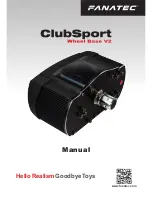
196
Also refer to: Configuration Mode; Lock Codes; Opera-
tion Mode; Profiler Setup Menu; Recorder Menu; Set-
up Wizard; Supervisor Mode; Tuning Menu and USB
Menu.
Main Setpoint
The instrument can has two setpoints for each control
loop. The main local setpoint and an alternate setpoint.
If used, the main setpoint is always a “local” setpoint.
One setpoint can be chosen to be active from the set-
point selection screen.
Also refer to: Alternate Setpoint; Auxiliary Input; Local
Setpoints; Profiler; Remote Setpoints; Setpoint and
Setpoint Select.
Manual Loop Alarm Time
The loop alarm time used is manually set whenever a
loop alarm is defined to have a manually set time, or if
P, PD or On-Off control is selected. This parameter de-
termines the duration of the output saturation condition
after which the loop alarm will be activated.
Also refer to: Loop Alarm; On-Off Control; PD; PI and
PID.
Manual Mode
Manual Mode operates as follows: The setpoint leg-
end is replaced by the word
MAN and setpoint value
is replaced by a % output power value. This value may
be adjusted using the keypad or via serial comms. The
power value can be varied from 0% to 100% for con-
trollers using single control type, and -100% to +100%
for controllers using dual control type. Switching be-
tween automatic and manual modes is achieved using
“bumpless transfer”.
Auto/manual mode can selected from the control con-
figuration sub-menu or via a digital input if one has
been configured for this function. Alternatively, if en-
abled in the display configuration sub-menu, the user
to switch between automatic and manual control from
operation mode. It is possible to use a controller as a
permanent “Manual Station” by permanently selecting
manual control in the control configuration sub-menu.
CAUTION:
Manual Mode should be used with care
because the power output level is set by the opera-
tor, therefore the PID algorithm is no longer in con-
trol of the process. Manual mode also ignores any
output power limits, valve open/close limits and the
control enable/disable setting. The operator is re-
sponsible for maintaining the process within safe
limits.
Also refer to: Bumpless Transfer; Control Configura-
tion; Control Type; Operation Mode; PID; Power Output
Limits and Serial Communications.
Manual Reset
Used to manually bias proportional outputs to compen-
sate for control deviation errors due to process load
variations. It is expressed as a percentage of output
power. This parameter is not applicable if the primary
output is set to On-Off control. If the process variable
settles below setpoint use a higher value to remove the
error, if the process variable settles above the setpoint
use a lower value. For PID or PI control, typically set
manual reset to approximately 80% of power needed
to maintain setpoint, although lower values can be
used to inhibit start-up overshoot. Integral action will
automatically remove any control deviation error.
Also refer to: Control Deviation; Integral Action; ON/
OFF Control; PI Control; PID; Proportional Control;
Process Variable; and Setpoint.
Master & Slave Controllers
The terms Master and Slave are often used in relation
to serial communications. This instrument can be a
communications slave if an Ethernet or RS485 module
is fitted.
With RS485 it can also act as a setpoint master or slave
in multi-zone applications. In this case, one instrument
controls the setpoint of one or more others. This could
be a simple master/slave application where the master
controller transmits its setpoint to the slaves so that
all operate at the same temperature. Alternatively, an
offset can be applied to each zone using the slave’s
setpoint offset parameter, so each is offset slightly from
the master.
A similar master/slave relationship can be achieved if
the master retransmits its setpoint as an analogue sig-
nal. In this case, the slave controllers must have match-
ing remote setpoint inputs so that they can follow the
masters’ setpoint value. It is possible to apply an offset
to each zone if the slave has an RSP offset parameter.
If not the remote setpoint input scaling can be adjusted
to achieve the offset.
Cascade Control is another type of Master & Slave
application where the slaves setpoint is set using the
master controllers PID power output.
Also refer to: Cascade Control; Linear Output; Retrans-
mit Output; Remote Setpoint; Auxiliary Input Offset;
Serial Communications and Setpoint.
Modbus RTU
Modbus RTU is the serial communications protocol
used on instruments fitted with the RS485 Commu-
nications module into option slot A. Alternatively, the
Modbus TCP protocol is available if the Ethernet com-
munications module is fitted. Modbus RTU is a Master/
Slave protocol. Only the Master may initiate communi-
cations. Each slave is given a unique address, and the
message contains the Modbus address of the intended
slave. Only this slave will act on the command, even
though other devices might receive it (an exception is
“broadcast commands” sent to address 0, which are
acted upon by all slaves). The commands can instruct
the slave to change values in its memory registers, or
ask it to send back values contained in the registers.
Each query or response message includes a cyclic re-
dundancy check (CRC) checksum to ensure that it ar-
rives uncorrupted.
Summary of Contents for Chromalox 4081
Page 2: ...B ...
















































